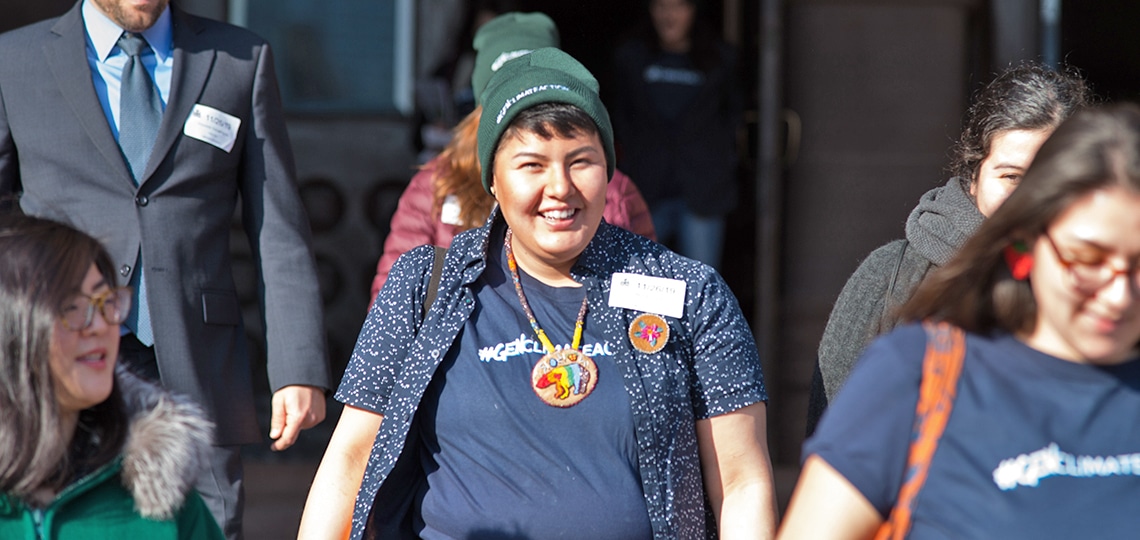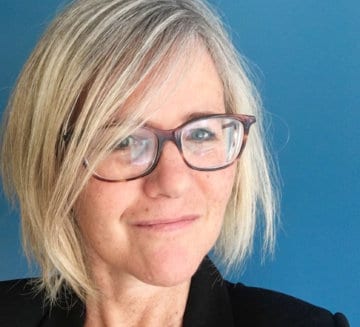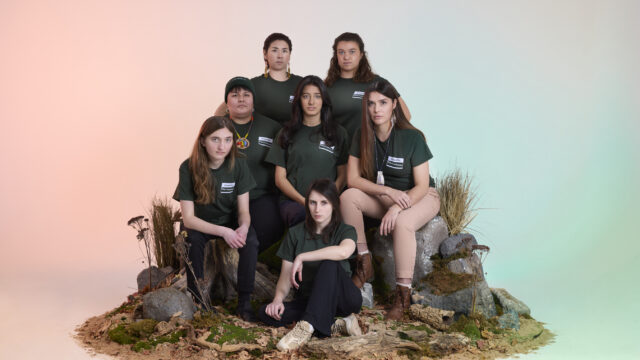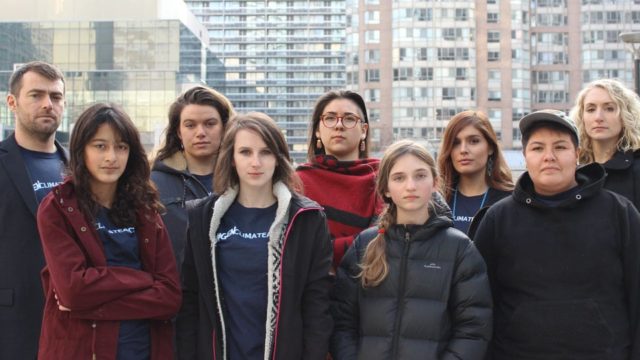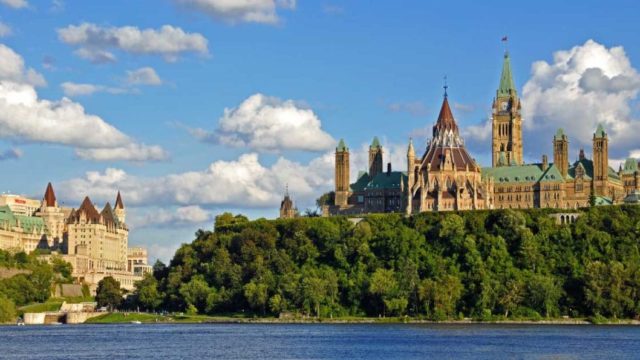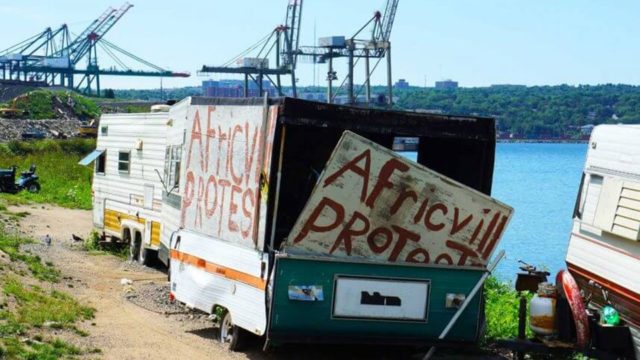Ecojustice spoke with Beze Gray, an Anishnaabe land/water protector from Aamjiwnaang First Nation, about environmental racism in Canada, how it impacts their community, and what our government needs to do about it. Beze is one of seven young people suing the Doug Ford government for weakening Ontario’s 2030 climate target.
Beze Gray grew up in the shadow and smog of dozens of large industrial facilities, in a region of Ontario known as Chemical Valley.
“Pollution has impacted the way of life of my community,” said Beze, who is Anishnaabe and from the Aamjiwnaang First Nation.
“The Anishnaabe way of life is based on the land. Pollution has put that way of life under serious threat.”
Located in near Sarnia, in southeast Ontario, Chemical Valley is home to about 40 per cent of Canada’s chemical industry. Though pollution impacts tens of thousands of people in the surrounding areas, a 2017 report by the Environmental Commissioner of Ontario found that people in Aamjiwnaang are particularly affected: “There is strong evidence that the pollution is causing adverse health effects, which neither the federal nor provincial government have properly investigated.”
This is no coincidence.
These same communities are also more likely to feel the impacts of climate change — and sooner — than predominantly white communities.
Pollution in Aamjiwnaang Nation is one example. The ongoing First Nations water crisis is another. And there are more.
In Nova Scotia, the community of Africville, once home to descendants of enslaved peoples, was used as a regional dumping ground for decades, then bulldozed in the 1960s. In Grassy Narrows, decades of court battles and finger-pointing means mercury pollution of the English-Wabigoon river system that happened in the 60s may never be cleaned up. Today, a staggering 90 per cent of residents have mercury poisoning.
In Toronto, researchers found soil contamination, waste sites, industrial land use, and more disproportionately hurt areas that are home to racialized communities, recent immigrants, and people with low incomes.
The term for this toxic pattern is environmental racism. It’s a direct result of Canada’s historic and ongoing colonization. It impacts communities and people from coast to coast to coast. And it needs to stop.
What is environmental racism?
The concept of environmental racism isn’t new — though it may have gained traction in recent years and months. In North America, Black, Indigenous, and people of colour (BIPOC) communities have fought for hundreds of years to protect the air, land, water, species, and cultural connections to the land from discriminatory policies and actions.
In 1982, Benjamin Chavis, a Black civil rights leader from the United States, coined the term “environmental racism.” Chavis defined the concept as,
“… racial discrimination in environmental policy-making, the enforcement of regulations and laws, the deliberate targeting of communities of colour for toxic waste facilities, the official sanctioning of the life-threatening presence of poisons and pollutants in our communities, and the history of excluding people of colour from leadership of the ecology movements.”
Environmental racism is a form of systemic racism, rather than individual racism. That means it is the result of institutional policies and practices, rather than individual beliefs and actions.
Systemic racism is embedded in the laws, policies and institutions that govern our lives — and it has been since European settlers first colonized this land.
The 1885 Head Tax, the 1923 Exclusion Act, and the Indian Act are all examples of racist Canadian legislation. In B.C., UN special rapporteur on the environment and human rights David Boyd notes that the maximum penalties for dumping garbage or waste on Crown land range from $2,000 to $1,000,000. Meanwhile, the maximum penalty for dumping garbage or waste on “Indian Reserves” is only $100.
After visiting Canada in 2019, Baskut Tuncak, UN special rapporteur on human rights and hazardous substances and wastes wrote: “I observed a pervasive trend of inaction of the Canadian Government in the face of existing health threats from decades of historical and current environmental injustices and the cumulative impacts of toxic exposures by indigenous peoples.”
Environmental racism’s systemic nature means that everything that goes into a particular decision — lobbying, laws, who gets to have a say — might be legal. But the results can and do disproportionately hurt BIPOC communities. They destroy peoples’ health, wreck natural environments, and threaten cultures.
What are the impacts of environmental racism?

As Ecojustice has documented, environmental racism has a serious impact on human health. Members of the Aamjiwnaang Nation who live near Chemical Valley report increased rates of asthma, reproductive effects, learning disabilities, and cancer.
People also report mental health impacts. “People on the reserve feared the outdoors, the warning sirens, and unreported incidences,” Ecojustice’s Exposing Chemical Valley report said.
“The legacy of colonization has been passed down along with the legacy of pollution,” Beze said. “The pollutants that my grandfather was exposed to have passed down, through the bloodstream, to me.”
Beze also said the harms are not limited to the direct health impacts of breathing in toxic air. Pollution seeps into food, culture, and even the words people use to communicate ideas and describe their world.
“Pollution has impacted food sovereignty. People in the Aamjiwnaang First Nation are losing access to traditional food sources due to the impact of pollution in the area,” Beze said. “It is also impacting the traditional language. Because pollution has wiped out so many things in their community, we have lost traditional words. And we don’t have traditional words for the pollution that surrounds us.”
How can we address environmental racism?
There is no quick fix for undoing environmental racism. But there are a few vital opportunities in Canada that will help address the issue.
First, Ecojustice is calling on the government to modernize the Canadian Environmental Protection Act (CEPA). CEPA is Canada’s cornerstone environmental law for protecting human health and the environment from pollution and toxic substances. Among other updates, we’re advocating for a 21st-century CEPA that recognizes everybody’s right to a healthy environment and defends people made to be vulnerable.
There is also a private member’s bill that if passed, will change how Canada addresses environmental racism. Bill C-226 was first introduced by former MP Lenore Zann as Bill C-230 in the last session of Parliament. It was approved by the House of Commons environment committee in June 2021 but then died on the order paper when Parliament dissolved for elections. In February 2022, MP Elizabeth May re-introduced the same legislation as Bill C-226, which is on its way to third reading in the House. If passed, Bill C-226 will require the Minister of Environment & Climate Change to develop a strategy that must include measures to address environmental racism in Canada.
Ecojustice is proud to work with the Canadian Coalition for Environment & Climate Justice (CCECJ), supported by several civil society groups and partners to urge all parties to work together to pass Bill C-226 in this session of parliament.
Finally, it’s important to acknowledge the mainstream environmental movement’s complicity in upholding environmental racism. In his original definition, Chavis listed “the history of excluding people of colour from leadership of the ecology movements” as an example of environmental racism. This shortcoming has hindered the movement’s ability to achieve justice for all.
Environmental organizations — including Ecojustice — can and must do better to acknowledge their past and commit to an anti-racist framework going forward.
In the wake of the killings of George Floyd, Breonna Taylor, Ahmaud Arbery, and countless others in the United States and Canada, Ecojustice released a statement committing to the following actions:
- Listening to BIPOC and our allies in the justice movement when they tell us what they need from us,
- Sharing our platforms to speak out against injustice and amplify the voices of those with lived experience,
- Adopting hiring and management practices that encourage greater diversity and inclusion within our organization,
- And continuing, as we have for 30 years, to advocate on behalf of communities who would otherwise be silenced in the fight to build a better earth.
Thank you for supporting Ecojustice and holding us to account for doing the work to understand and address environmental racism — both outside and within the organization. We promise to keep you updated as we undertake this critical work.

